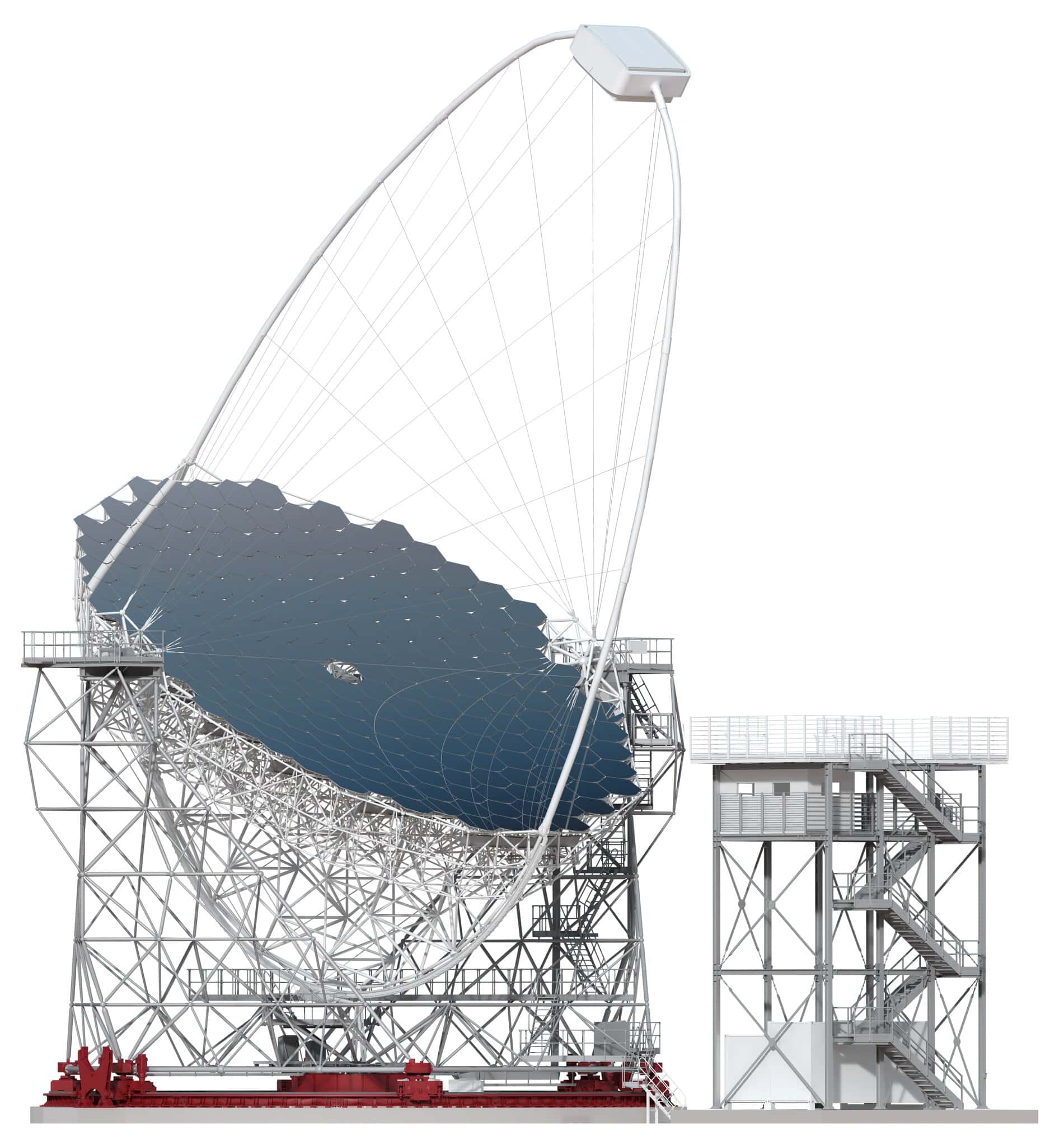Large But Nimble
Don’t be deceived by the enormous size of these telescopes – the LSTs are very nimble to capture brief, low-energy gamma-ray signals. Even at 45 m tall and 100 tonnes, the LST can reposition between any two points in the sky within 20 seconds. Both the repositioning speed and the low-energy threshold provided by the LSTs are critical for the CTAO’s studies of galactic transients, high redshift active galactic nuclei and gamma-ray bursts. The LSTs will expand the science to reach cosmological distances and fainter sources from the northern hemisphere array, CTAO-North.

The Camera
The LST camera weighs less than two tonnes and uses 265 photomultiplier tubes (PMTs) as photosensors to convert the light into electrical signals. The camera has a total field of view of about 4.3 degrees and has been designed for maximum compactness and low weight, cost and power consumption while providing optimal performance at low energies.
The Reflector
The LST’s reflector is 23 m in diameter and parabolic in shape. It is supported by a tubular structure made of reinforced carbon fibre and steel tubes. A massive reflective surface of 400 m2 collects and focuses the Cherenkov light into the camera, where the light can be digitised and processed.
The Rail and Bogies
The LST is equipped with a circular 23 m diameter rail and six wheel bogies that it uses to quickly spin to any point to in the sky in less than 20 seconds.
LST Rendering (Credit: Gabriel Pérez Díaz, IAC)